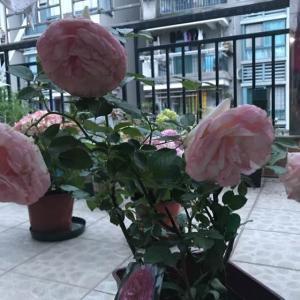文章
Miss Chen
2018年05月13日

Description: This small perennial orchid produces a low rosette of evergreen basal leaves. Individual leaves are 1½-2½" long and ¾-1½" across; they are ovate or broadly elliptic and smooth along their margins. There are 5-7 primary veins per leaf; they are parallel. These veins are interconnected through a network of secondary veins. Both the primary and secondary veins are accented in white, while the remaining leaf surface is dark green. The basal leaves taper abruptly to petiole-like bases that are short and winged, where they are also accented in white along their central veins. After several years, a spike-like raceme of flowers develops from the basal rosette that is 4-14" tall and more or less erect. The central stalk of this inflorescence is light green, glandular-pubescent, and terete. Along the lower two-thirds of its length, there are widely separated leafy bracts. These bracts are small in size (about ½" in length), linear-lanceolate in shape, and ascending to erect. Along the upper one-third of the central stalk, the small flowers are densely distributed, facing in all directions.
The sepals and petals of these flowers (3 of each per flower) are white or greenish white, while their inferior ovaries are green and glandular-pubescent. The upper sepal and 2 lateral petals of each flower are merged together to form a hood with a slightly upturned outer rim, while the 2 lateral sepals are free and the lower petal forms an open pouch with a minute down-turned beak. These petals and sepals are 3.5-5.5 mm. long; the outer surfaces of the hood and lateral sepals are minutely pubescent. The ovaries are 6-8 mm. long, ellipsoid in shape, and ascending. At the bases of the ovaries, there are ascending floral bracts. These bracts are green, glandular-pubescent, linear-lanceolate in shape, and ascending; they are about the same length as the ovaries. The blooming period occurs during mid- to late summer, lasting about 3-4 weeks. There is no noticeable floral fragrance. Afterwards, the flowers are replaced by seed capsules that become ovoid in shape and brown at maturity. At this time, these capsules split open into several sections to release their minute seeds to the wind. The root system consists of a shallow creeping rhizome with coarse fibrous roots. After flowering, this rhizome forms 1-3 clonal offsets. The clonal offsets become independent on their rhizomes, while the original rhizome dies. The evergreen basal leaves persist for at least 1½ years (at least 2 summers and 1 winter).

Cultivation: The preference is medium shade to dappled sunlight, mesic to dry-mesic conditions, and an acidic loose soil that contains loam, loess (wind-blown silt from a prior ice age), or glacial till with decaying organic matter. The site should be protected from drying winds and it should be relatively humid. The root system of this orchid benefits from an endomycorrhizal association with certain kinds of fungi. This orchid has been successfully cultivated indoors in terrariums (Ugiansky, 2010). It should not be collected from the wild, which can easily destroy local populations.
Range & Habitat: The native Downy Rattlesnake-Plantain is uncommon in Illinois, occurring mostly in northern and southern Illinois (see Distribution Map). Habitats include upland woodlands, north-facing wooded slopes, bluffs, large wooded ravines or sandstone canyons, sandstone glades, and woodlands damaged by logging. On rare occasions, this orchid has also been found in forested bogs. It is often associated with such canopy trees as oaks, pines, Eastern Hemlock (Tsuga canadensis), or sugar maple (Acer saccharum). This orchid usually occurs in high Faunal Associations: The small flowers are cross-pollinated by bees, including bumblebees (Bombus spp.) and green metallic bees (e.g., Augochlora spp., Augochlorella spp.); see ILPIN and Homoya (1993) for more information. Aside from this, little is known about floral-faunal relationships for this orchid. The evergreen leaves may be browsed by deer and the rhizomes may be eaten by chipmunks or mice, but additional study of such potential threats is required.
Photographic Location: A rocky bluff dominated by Eastern Hemlock (Tsuga canadensis) at a nature preserve in east-central Indiana.
Comments: While the flowers of Downy Rattlesnake-Plantain are rather small, the reticulated patterns of its basal leaves are very ornate and unique, making this orchid easy to identity. In spite of its common name, this orchid is not closely-related to plantains (Plantago spp.); its leaves have a shape that is similar to some of the common broad-leaved plantains. The common name is also inspired by the superficial resemblance of the leaves' reticulated patterns to the skin of a rattlesnake. The inflorescence of Downy Rattlesnake-Plantain resembles those of the Lady Tresses' Orchids (Spiranthes spp.), although they have dissimilar leaves. The flowers of the former orchid differ from those of the latter by the pouch-like structure of their lower lips, which is lacking in the flowers of Lady Tresses' Orchids. There are other orchid species in the Goodyera genus, but their ranges are located outside of Illinois, mostly to the north or northeast.
The sepals and petals of these flowers (3 of each per flower) are white or greenish white, while their inferior ovaries are green and glandular-pubescent. The upper sepal and 2 lateral petals of each flower are merged together to form a hood with a slightly upturned outer rim, while the 2 lateral sepals are free and the lower petal forms an open pouch with a minute down-turned beak. These petals and sepals are 3.5-5.5 mm. long; the outer surfaces of the hood and lateral sepals are minutely pubescent. The ovaries are 6-8 mm. long, ellipsoid in shape, and ascending. At the bases of the ovaries, there are ascending floral bracts. These bracts are green, glandular-pubescent, linear-lanceolate in shape, and ascending; they are about the same length as the ovaries. The blooming period occurs during mid- to late summer, lasting about 3-4 weeks. There is no noticeable floral fragrance. Afterwards, the flowers are replaced by seed capsules that become ovoid in shape and brown at maturity. At this time, these capsules split open into several sections to release their minute seeds to the wind. The root system consists of a shallow creeping rhizome with coarse fibrous roots. After flowering, this rhizome forms 1-3 clonal offsets. The clonal offsets become independent on their rhizomes, while the original rhizome dies. The evergreen basal leaves persist for at least 1½ years (at least 2 summers and 1 winter).

Cultivation: The preference is medium shade to dappled sunlight, mesic to dry-mesic conditions, and an acidic loose soil that contains loam, loess (wind-blown silt from a prior ice age), or glacial till with decaying organic matter. The site should be protected from drying winds and it should be relatively humid. The root system of this orchid benefits from an endomycorrhizal association with certain kinds of fungi. This orchid has been successfully cultivated indoors in terrariums (Ugiansky, 2010). It should not be collected from the wild, which can easily destroy local populations.
Range & Habitat: The native Downy Rattlesnake-Plantain is uncommon in Illinois, occurring mostly in northern and southern Illinois (see Distribution Map). Habitats include upland woodlands, north-facing wooded slopes, bluffs, large wooded ravines or sandstone canyons, sandstone glades, and woodlands damaged by logging. On rare occasions, this orchid has also been found in forested bogs. It is often associated with such canopy trees as oaks, pines, Eastern Hemlock (Tsuga canadensis), or sugar maple (Acer saccharum). This orchid usually occurs in high Faunal Associations: The small flowers are cross-pollinated by bees, including bumblebees (Bombus spp.) and green metallic bees (e.g., Augochlora spp., Augochlorella spp.); see ILPIN and Homoya (1993) for more information. Aside from this, little is known about floral-faunal relationships for this orchid. The evergreen leaves may be browsed by deer and the rhizomes may be eaten by chipmunks or mice, but additional study of such potential threats is required.
Photographic Location: A rocky bluff dominated by Eastern Hemlock (Tsuga canadensis) at a nature preserve in east-central Indiana.
Comments: While the flowers of Downy Rattlesnake-Plantain are rather small, the reticulated patterns of its basal leaves are very ornate and unique, making this orchid easy to identity. In spite of its common name, this orchid is not closely-related to plantains (Plantago spp.); its leaves have a shape that is similar to some of the common broad-leaved plantains. The common name is also inspired by the superficial resemblance of the leaves' reticulated patterns to the skin of a rattlesnake. The inflorescence of Downy Rattlesnake-Plantain resembles those of the Lady Tresses' Orchids (Spiranthes spp.), although they have dissimilar leaves. The flowers of the former orchid differ from those of the latter by the pouch-like structure of their lower lips, which is lacking in the flowers of Lady Tresses' Orchids. There are other orchid species in the Goodyera genus, but their ranges are located outside of Illinois, mostly to the north or northeast.
0
0
文章
权问薇
2018年05月13日


一、养殖方法
1、浇水
在给小兰衣补水的时候,应该多多留意,因为小蓝衣在每个气候对水分的需求量是不一样的,比如春秋时节也是小蓝衣生长的时期,这个时候就不用浇太多的水,只需要保证盆土的湿润就可以了。一般小蓝衣在夏天来临之时,就会进入一个休眠状态,这个时候几乎每月补一次少量的水就可以了,但是这个时候也不要让小蓝衣的叶子干枯。
2、光照
如果小蓝衣到了生长的时间就要摄取充足的阳光,但是如果是刚刚发育的小蓝衣幼苗在夏季的时候,就要避开阳光的强烈照射并且要保证室内的通风,如果已经发育成熟的小蓝衣是不惧怕阳光的照射的。

3、盆土和肥料肥
我们都知道很多花的盆土都是用普通的泥沙混合而成的,但是小蓝衣比较适合用珍珠岩和泥炭,煤渣的组合,有些人为了让植物的根茎可以透气一般也会加入点沙,同时在施肥的时候也要格外的注意,在冬季来临之际一定要控制给小蓝衣施肥的量,如果在冬天过冷的情况之下可以不用追肥。

二、注意事项
小蓝衣在养殖的时候其实也有很多的注意事项,其实在冬季时小蓝衣是不需要过多水份的,尤其是在低于3度左右的环境中要逐渐给小蓝衣断水而且要经常保持盆土的潮湿性,尽量不要让小蓝衣的叶子上有太多的水份不然很容易因残留在叶子上的水而导致叶子被腐蚀,尤其是在夏季来临要格外注意。

‘
小蓝衣的繁殖方法也有很多的选择比如像播种法,分株法,扦插法等等,也方便居家养殖的人可以选择适合自己条件的养殖方法,而且小蓝衣的生存力是很强的。
2
1
文章
权问薇
2018年05月13日


一.种植方法:
1这种植物通常是采用种子繁殖的,而且无论是撒播还是穴播还是条播都可以,大概每亩的种子用量大概是0.5-1千克,无论是春夏秋都可以播种。
2这种植物由于种子比较细小,所以播种之前应该先把苗床整理一遍,由于它对于泥土的要求不太严格,在PH5.0到8.2的泥土上面都可以健康地成长,但是由于这种植物比较害怕积水,所以种植的泥土虽然对于酸碱没有要求,但是一定要有疏通性,而且排水性也要好,这样才能够便于雨水的排放,不至于植株的根部腐坏导致整株都会死亡。

3这种植物的种子缺损率能够高达百分之七十到百分之八十,所以播种之前必须要先对种子进行催生芽苗的处理,如果种植的种子量比较少的话,可以用含百分之十五的硫酸液浸泡种子20到30分钟之后再播种,或者也可以用70℃到80℃的水浸泡,大概浸12到15个小时之后就可以播种了。如果种植的种子数量比较多的话,最好还是准备一台碾米机器剥掉种子外皮。
4这种植物的种子出芽率一般在百分之四十到百分之九十,有一些比较硬实的要等到第二年才会出芽。
二:注意事项:
1这种植物由于在芽苗时期成长速度非常地慢,如果不经常管理的话,周边会长出许多杂草汲取植株需要的营养,植株的幼苗就不能健康地成长了。所以在它的幼苗期,我们要经常给它除草。
2这种植物能够抵御一定程度内的寒冷,所以即使是到了冬季也不需要对它进行保温处理,而且耐旱性也比较高,所以不用担心水量的问题。
3一旦这种植物度过了幼苗期,那么它就能够成功地抑制杂草的生长。

0
3
文章
Miss Chen
2018年05月12日

Description: This herbaceous perennial plant is 1-2½' tall, consisting of a loose cluster of basal leaves and flowering stems that develop directly from the creeping rootstock. On the lower portion of each flowering stem, there is a pair of opposite leaves. Both the basal leaves and the lower opposite leaves of the flowering stems have a similar appearance. They are up to 5" long and across, and palmately cleft with 5 deep lobes. Each of these lobes is wedge-shaped at the base. The leaf margins have a few secondary lobes and coarse teeth. The upper pairs of leaves on the flowering stems are like the lower leaves, except they are smaller in size and they usually have 3 primary lobes, rather than 5. The upper leaf surface is medium green with fine appressed hairs. The long petioles of these leaves are light green, terete, and coarsely hairy. The flowering stalks (peduncles) are up to 6" long and ascending to erect; like the stems with opposite leaves, they are light green to reddish brown, terete, and coarsely hairy.
Each flowering stalk terminates in a floppy corymb or umbel of 2-5 flowers; sometimes only a single flower is produced. Each flower is about 1–1¼" across, consisting of 5 rounded petals, 5 green sepals, 10 stamens with pale yellow anthers, and a single pistil with 5 carpels. The petals are pale purplish pink and obovate with rounded tips; they have fine veins radiating across their surfaces that function as nectar guides. The sepals are light green, hairy, lanceolate-oblong or elliptic-oblong in shape, and cuspidate (tapering abruptly into short narrow tips); they are shorter than the petals. Both the flowering stalks (peduncles) and pedicels have non-glandular hairs. The blooming period occurs during the late spring to early summer, lasting about 1 month. The pistil of the flower elongates into a beak-like fruit about 1–1½" long. As it matures, the 5 slender carpels of this fruit curl upward and backward to fling the seeds from the mother plant. The seed surface is reticulated. The root system consists of a dark stout rootstock that produces rhizomes; it is high in tannins. This plant often forms colonies.

Cultivation: The preference is light shade to partial sunlight, moist to slightly dry conditions, and rich loamy soil with abundant organic matter. This plant also tolerates full sunlight if there is sufficient moisture in the soil. It is one of the easier woodland species to cultivate.
Range & Habitat: The native Wild Geranium is a common plant of woodlands that occurs in all counties of Illinois (see Distribution Map). Habitats include both floodplain and upland woodlands, savannas, meadows in wooded areas, semi-shaded seeps, and rocky glades. Sometimes it invades hill prairies from adjacent wooded areas. Wild Geranium is a typical species of mesic deciduous woodlands.

Faunal Associations: The nectar and pollen of the flowers attract bumblebees, mason bees (Osmia spp.), cuckoo bees (Nomada spp.), long-horned bees (Synhalonia spp.), Halictid bees (Lasioglossum spp., etc.), Andrenid bees (Andrena spp.), and other bees. An Andrenid bee, Andrena distans, is a specialist pollinator (oligolege) of Wild Geranium (Geranium maculatum). The flowers also attract Syrphid flies, dance flies (Empis spp.), butterflies, and skippers. Other insects feed on the leaves and other parts of Wild Geranium. This includes leaf-mining larvae of the beetle Pachyschelus purpureus, Acyrthosiphon malvae (Geranium Aphid) and Macrosiphum geranii (Wild Geranium Aphid), Metriorrhynchomiris dislocatus (Yellow Plant Bug), burrowing bugs (Sehirus spp.), stink bugs (Euschistus spp.), and ebony bugs (Corimelaena spp.). The caterpillars of some moths species also feed on Wild Geranium and other Geranium spp., including Lacinipolia lorea (Bridled Arches), Heliothis virescens (Geranium Budworm Moth, Tobacco Budworm Moth), and Archips purpurana (Omnivorous Leafroller Moth). Among vertebrate animals, the Eastern Chipmunk sometimes eats the seeds, while the White-tailed Deer occasionally browses on the foliage.

Photographic Location: A flower garden at Crystal Lake Park in Urbana, Illinois, and Busey Woods in the same city.
Comments: The Wild Geranium (Geranium maculatum) is the showiest of the native geraniums in Illinois with flowers at least 1" across. All of the others are far less showy because they have smaller flowers. There is a European species, Geranium pratense (Meadow Geranium), with equally large flowers, but it has not been observed in the wild in Illinois. This species has a similar appearance to the Wild Geranium, except that the hairs on its flowering stalks and pedicels are sticky-glandular, and its leaves are more divided and finely cut. Another European species, Geranium sanguineum (Long-Stalked Geranium), is rarely observed as a naturalized plant in Illinois. It has flowers with notched petals and its leaves are smaller in size.
Each flowering stalk terminates in a floppy corymb or umbel of 2-5 flowers; sometimes only a single flower is produced. Each flower is about 1–1¼" across, consisting of 5 rounded petals, 5 green sepals, 10 stamens with pale yellow anthers, and a single pistil with 5 carpels. The petals are pale purplish pink and obovate with rounded tips; they have fine veins radiating across their surfaces that function as nectar guides. The sepals are light green, hairy, lanceolate-oblong or elliptic-oblong in shape, and cuspidate (tapering abruptly into short narrow tips); they are shorter than the petals. Both the flowering stalks (peduncles) and pedicels have non-glandular hairs. The blooming period occurs during the late spring to early summer, lasting about 1 month. The pistil of the flower elongates into a beak-like fruit about 1–1½" long. As it matures, the 5 slender carpels of this fruit curl upward and backward to fling the seeds from the mother plant. The seed surface is reticulated. The root system consists of a dark stout rootstock that produces rhizomes; it is high in tannins. This plant often forms colonies.

Cultivation: The preference is light shade to partial sunlight, moist to slightly dry conditions, and rich loamy soil with abundant organic matter. This plant also tolerates full sunlight if there is sufficient moisture in the soil. It is one of the easier woodland species to cultivate.
Range & Habitat: The native Wild Geranium is a common plant of woodlands that occurs in all counties of Illinois (see Distribution Map). Habitats include both floodplain and upland woodlands, savannas, meadows in wooded areas, semi-shaded seeps, and rocky glades. Sometimes it invades hill prairies from adjacent wooded areas. Wild Geranium is a typical species of mesic deciduous woodlands.

Faunal Associations: The nectar and pollen of the flowers attract bumblebees, mason bees (Osmia spp.), cuckoo bees (Nomada spp.), long-horned bees (Synhalonia spp.), Halictid bees (Lasioglossum spp., etc.), Andrenid bees (Andrena spp.), and other bees. An Andrenid bee, Andrena distans, is a specialist pollinator (oligolege) of Wild Geranium (Geranium maculatum). The flowers also attract Syrphid flies, dance flies (Empis spp.), butterflies, and skippers. Other insects feed on the leaves and other parts of Wild Geranium. This includes leaf-mining larvae of the beetle Pachyschelus purpureus, Acyrthosiphon malvae (Geranium Aphid) and Macrosiphum geranii (Wild Geranium Aphid), Metriorrhynchomiris dislocatus (Yellow Plant Bug), burrowing bugs (Sehirus spp.), stink bugs (Euschistus spp.), and ebony bugs (Corimelaena spp.). The caterpillars of some moths species also feed on Wild Geranium and other Geranium spp., including Lacinipolia lorea (Bridled Arches), Heliothis virescens (Geranium Budworm Moth, Tobacco Budworm Moth), and Archips purpurana (Omnivorous Leafroller Moth). Among vertebrate animals, the Eastern Chipmunk sometimes eats the seeds, while the White-tailed Deer occasionally browses on the foliage.

Photographic Location: A flower garden at Crystal Lake Park in Urbana, Illinois, and Busey Woods in the same city.
Comments: The Wild Geranium (Geranium maculatum) is the showiest of the native geraniums in Illinois with flowers at least 1" across. All of the others are far less showy because they have smaller flowers. There is a European species, Geranium pratense (Meadow Geranium), with equally large flowers, but it has not been observed in the wild in Illinois. This species has a similar appearance to the Wild Geranium, except that the hairs on its flowering stalks and pedicels are sticky-glandular, and its leaves are more divided and finely cut. Another European species, Geranium sanguineum (Long-Stalked Geranium), is rarely observed as a naturalized plant in Illinois. It has flowers with notched petals and its leaves are smaller in size.
0
0
文章
Miss Chen
2018年05月12日

Description: This herbaceous perennial plant is 1-3' tall, branching occasionally. The slender stems have a tendency to sprawl; they are light green to reddish green, angular, and strongly ridged. Usually, there are a few short hairs that provide the stems with a slightly rough texture. At intervals along the stems, there are whorls of 6 sessile leaves. These leaves are up to 2½" long and ½" across; they are oblanceolate in shape, while their margins are smooth and ciliate. Each leaf abruptly tapers to a short pointed tip (cuspidate). Occasionally, 1-3 stalks of flowers develop from the middle to upper whorled leaves; these stalks are often longer than the leaves, and they can be axillary or terminal. Each of these stalks may produce 1-3 flowers on slender pedicels.
Each flower spans about 1/6" (4.5 mm.) across, consisting of 4 greenish white to white petals, 4 stamens, and a bristly 2-celled ovary. Each petal tapers to a narrow tip. The blooming period occurs during the summer for about 2 months. Each flower is replaced by a bristly 2-celled carpel; each globoid cell contains a single small seed. The cells of the carpel eventually separate. The root system produces rhizomes. This plant can spread by reseeding itself, or by forming vegetative offshoots from the rhizomes.
Cultivation: The preference is light shade to partial sun, moist conditions, and a fertile loamy soil.

Range & Habitat: The native Sweet-Scented Bedstraw occurs in most areas of Illinois, where it is occasional to locally common (see Distribution Map). Habitats include moist to mesic deciduous woodlands, rocky bluffs, areas along woodland paths, thickets, moist meadows, partially shaded seeps and springs, partially shaded riverbanks, and bogs. In badly degraded woodlands, this plant is replaced by Galium aparine (Cleavers).
Faunal Associations: The flowers are occasionally visited by small bees or flies; these insects usually suck nectar. The caterpillars of several moths feed on Galium spp. (Bedstraws), including Lobocleta ossularia (Drab Brown Wave), Epirrhoe alternata (White-Banded Toothed Carpet), and Hyles gallii (Galium Sphinx). Other insect feeders include larvae of Dasineura americana (Bedstraw Midge), larvae of the sawfly Halidamia affinis, and the polyphagous aphid Abstrusomyzus phloxae. Deer usually leave the foliage alone. The bristly carpels of Sweet-Scented Bedstraw can cling to the fur of animals and the clothing of humans; by this means, the seeds are distributed to new locations.

Photographic Location: Along a woodland path in a moist area of Busey Woods in Urbana, Illinois.
Comments: The common name refers to the vanilla scent of the dried foliage. Sweet-Scented Bedstraw is typically found in moist woodlands. It can be distinguished from other Galium spp. (Bedstraws) by considering the following set of features: 1) there are 6 leaves per whorl, 2) the carpels are bristly rather than glabrous, 3) the leaves are oblanceolate with short pointed tips, and 4) the petals of the flowers taper to narrow tips. Sweet-Scented Bedstraw is one of the larger Bedstraws and its stems can be smooth or slightly rough. Its appearance is similar to Galium aparine (Cleavers), although the latter is an annual plant that occasionally produces 8 leaves per whorl and its bristly stems and leaf margins are more likely to cling to adjacent objects.
Each flower spans about 1/6" (4.5 mm.) across, consisting of 4 greenish white to white petals, 4 stamens, and a bristly 2-celled ovary. Each petal tapers to a narrow tip. The blooming period occurs during the summer for about 2 months. Each flower is replaced by a bristly 2-celled carpel; each globoid cell contains a single small seed. The cells of the carpel eventually separate. The root system produces rhizomes. This plant can spread by reseeding itself, or by forming vegetative offshoots from the rhizomes.
Cultivation: The preference is light shade to partial sun, moist conditions, and a fertile loamy soil.

Range & Habitat: The native Sweet-Scented Bedstraw occurs in most areas of Illinois, where it is occasional to locally common (see Distribution Map). Habitats include moist to mesic deciduous woodlands, rocky bluffs, areas along woodland paths, thickets, moist meadows, partially shaded seeps and springs, partially shaded riverbanks, and bogs. In badly degraded woodlands, this plant is replaced by Galium aparine (Cleavers).
Faunal Associations: The flowers are occasionally visited by small bees or flies; these insects usually suck nectar. The caterpillars of several moths feed on Galium spp. (Bedstraws), including Lobocleta ossularia (Drab Brown Wave), Epirrhoe alternata (White-Banded Toothed Carpet), and Hyles gallii (Galium Sphinx). Other insect feeders include larvae of Dasineura americana (Bedstraw Midge), larvae of the sawfly Halidamia affinis, and the polyphagous aphid Abstrusomyzus phloxae. Deer usually leave the foliage alone. The bristly carpels of Sweet-Scented Bedstraw can cling to the fur of animals and the clothing of humans; by this means, the seeds are distributed to new locations.

Photographic Location: Along a woodland path in a moist area of Busey Woods in Urbana, Illinois.
Comments: The common name refers to the vanilla scent of the dried foliage. Sweet-Scented Bedstraw is typically found in moist woodlands. It can be distinguished from other Galium spp. (Bedstraws) by considering the following set of features: 1) there are 6 leaves per whorl, 2) the carpels are bristly rather than glabrous, 3) the leaves are oblanceolate with short pointed tips, and 4) the petals of the flowers taper to narrow tips. Sweet-Scented Bedstraw is one of the larger Bedstraws and its stems can be smooth or slightly rough. Its appearance is similar to Galium aparine (Cleavers), although the latter is an annual plant that occasionally produces 8 leaves per whorl and its bristly stems and leaf margins are more likely to cling to adjacent objects.
0
0
文章
权问薇
2018年05月12日


1、生长习性
此植物是原是生长在山顶阴坡或是半阴坡较瘠薄或是石头较多的土壤之中,那里的年降水量是750毫米至1000毫米,土壤长期呈半湿润状态,且养分非常充足。而山坡处很难出现积水,且土壤较为松软,非常适合它的生长。

在根据多年来花友的栽种发现,此植物虽喜欢较潮湿的土壤,但是却非常害怕水涝,若土壤中的养分不充足、或是土质不够疏松,在加上它本来就生长缓慢,则会直接导致它停止生长。时间较长则会严重影响其健康。

2、土壤选择
以砂质土壤为主,因其透水性与透气性较好,且不会出现粘土现象,但是并不可能单一的使用砂土,而是要与其它相互混合搭配。若单一的使用砂土,它所含的养分非常少,且保肥效果非常差,这并不利于植物后期的生长。

可以用珍珠岩、草炭土与砂土相混合使用。其中珍珠岩可以有效的控制肥度与肥效等,草炭土的好处就是含有部分矿物质、腐殖质等,所以这才是对植物生长非常有利的土壤。在装土壤前,可以先在盆底部放一些小木块或是柳树皮等,这样更可以加强土壤的透气性。
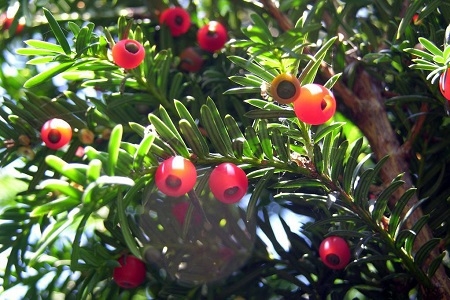
0
2
文章
弄啥嘞
2018年05月12日


1、容器
一般选择中型的鱼缸就可以。若想在花瓶中养,需选择底部大一些的。
2、温度
需控制在适宜的范围,即五到三十度。在这个范围内,都可正常生长,不可过高过低。
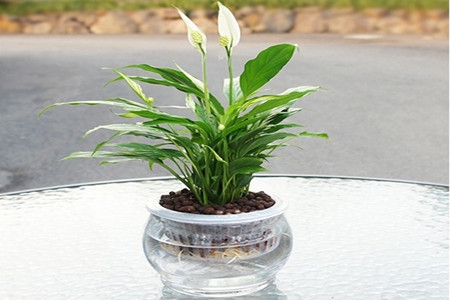
3、光照
水培的同样也需要光照。平时的养护中散射光就可以。放在光线好的窗口等地,不一定非得放在太阳底下。另外,夏季时需注意遮光,避免强光。
4、换水
不同的季节换水间隔不一样。高温时,比如夏季,需一周左右一次。温度低时,比如冬季,可以十到十五天一次。注意,换水之前需要清洗根部,然后将粘液、衰老的根、烂了的根剪掉,并将容器上附着的青苔等刷掉。水量也要注意,以没过根部的二分之一到三分之二为宜。另外,换水过后,还可在里面加入一些营养液。

5、喷水
为了防止叶片干枯,需要经常用清水喷洒叶片,特别是夏季。
6、施肥
除了换水时候的营养液,主要施加的是叶面肥。大约每周一次。这样能为其提供足够营养,使得叶片有光泽,冬季还可抵抗寒冷。
7、注意事项
在开花期时,喷洒一些磷酸二氢钾溶液,可促进开花。

2
4
◤恒觉:原来换水有讲究,我家的白掌总是要死不活。谢谢楼主分享!
文章
巴黎铁塔
2018年05月12日
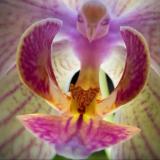
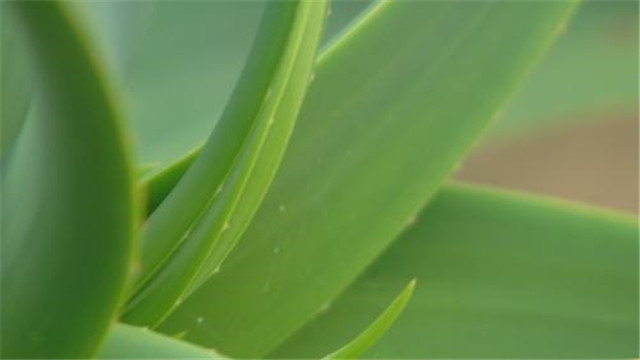
1、喷水增湿
原因:芦荟是典型的喜湿植物,在比较湿润的环境中生长的会很好,但如果在干燥的环境之中时间过长,它就会无法正常生长,叶子也会出现发黄的迹象。
解决方法:在养芦荟处过于干燥的时候要采取一定的措施增加空气湿度,比如在它周围一个盛满清水的水盆、往它的叶子上喷一些水雾等等。
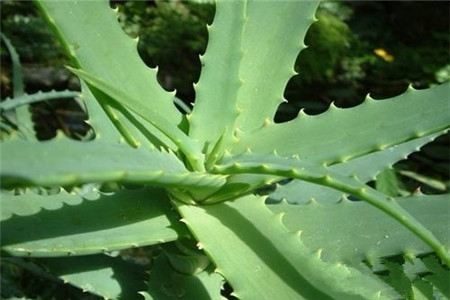
2、控制浇水
原因:芦荟虽然喜湿,但同样怕涝,在过于潮湿的土壤之中无法正常生长。因为过于潮湿的土壤含水量会很高,这样氧气的含量就会减少,从而影响到根部的呼吸。根部的呼吸受到抑制,就无法正常的从土壤之中吸收营养,叶子也会因为缺少营养的供给而发黄。
解决方法:情况不是很严重的话可以给芦荟松一下土,增加土中的含氧量并且使土中的水分迅速挥发。如果情况比较严重,就需要将植株从土中取出,然后清理掉坏掉的根系,再用新配的土壤另行栽种。
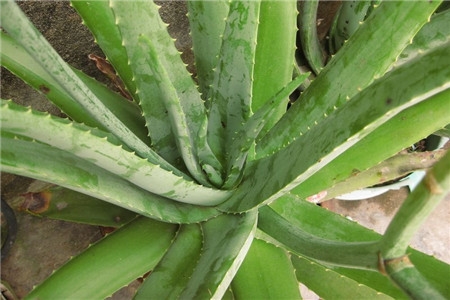
3、及时施肥
原因:虽然芦荟不是特别喜肥,但是长时间不施肥也会导致它缺少营养,难以正常的生长。
解决方法:先为它施加一些淡薄的肥料,一次不要加太多,等到它的情况有所好转之后,再按照科学的方法为它施肥。
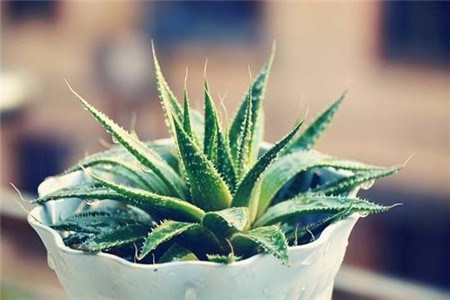
0
0
文章
巴黎铁塔
2018年05月12日

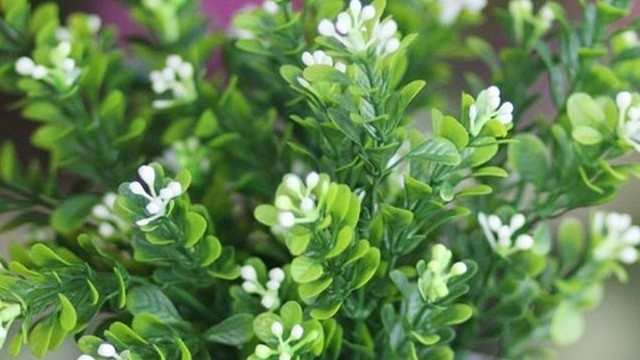
1、增加光照
原因:长时间缺少光照可能会使得米兰无法正产的合成叶绿素,而缺少了叶绿素,它的叶子就会发黄。
解决方法:将米兰放到室内光照充足的地方进行养护。期间,最好定时的转动一下花盆,改变植株的受光方向,让它均匀受光。这样能让它长得更加均匀,不易出现黄叶。
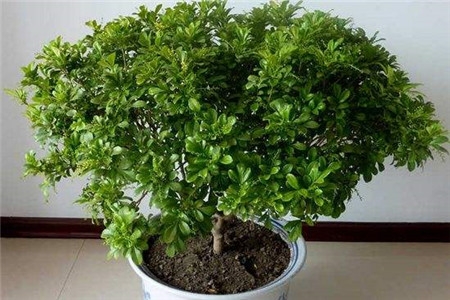
2、暂停浇水
原因:给米兰浇水太多或是太频繁,会导致土中出现积水,若是不能及时排出,就会影响到根部吸收土中的氧气,从而改变为无氧呼吸的呼吸模式,产生酒精引发烂根。一旦烂根,它就无法正常从土中吸收养分,叶子也会因此发黄。
解决方法:首先暂停浇水,然后将它移动到通风较好的地方,并且松一松盆土或者是换上新的没有水的盆土。之后等土干掉以后再浇水。
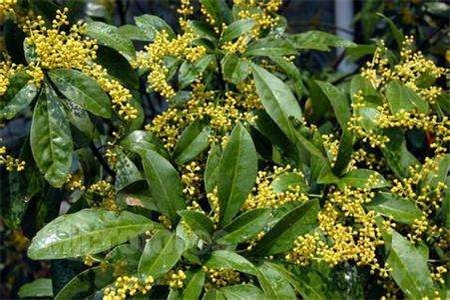
3、用酸性水浇
原因:米兰花是喜欢酸性土壤让的花,如果经常用碱性的水浇它,它同样会出现黄叶。
解决方法:每年使用矾肥水浇灌3-5次,或者是在浇水之前先在水中滴加一两滴不含盐分的食醋。之后再换土的时候为它换上酸性的土壤。
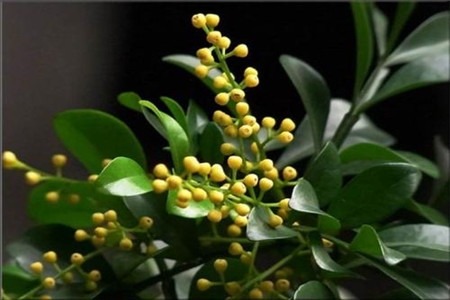
0
1
文章
巴黎铁塔
2018年05月12日

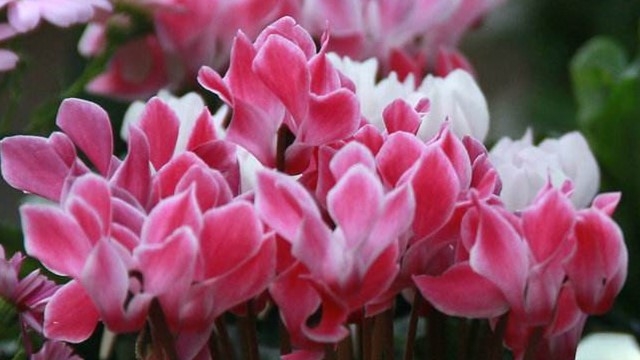
1、减少浇水
原因:仙客来虽然喜水,但同样怕涝,浇水太多会使土壤中出现积水,然后损伤到植株的根系。这样它就无法正常从土中汲取养分,进而出现叶子发黄的现象。
解决方法:减少给仙客来的浇水频率,并且将花盆放到通风的地方,让土中水分挥发掉。

2、增加光照
原因:光照不足可能会导致仙客来无法正产进行光合作用,无法正常合成叶绿素,从而使得叶子发黄。
解决方法:将仙客来移动到阳光充足的地方进行养护。
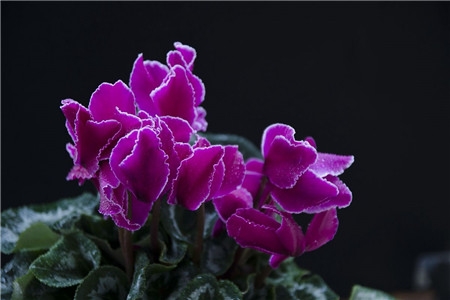
3、喷水增湿
原因:仙客来比较喜湿,长时间处于过于干燥的环境之中会使它无法正常生长,叶片发蔫发黄,没有精神。
解决方法:平时注意仙客来周围的湿度情况,过于干燥的时候就用喷壶往它周围喷一些水雾,或者是在它的花盆旁边放一盆清水,增加湿度。
4、及时施肥
原因:若是长时间缺少营养,它的叶子也有可能会出现发黄的情况。
解决方法:及时施加一些肥料或者是营养液,不过要注意不能一次加的太多,要少量多次的施肥,这样便于它的恢复。
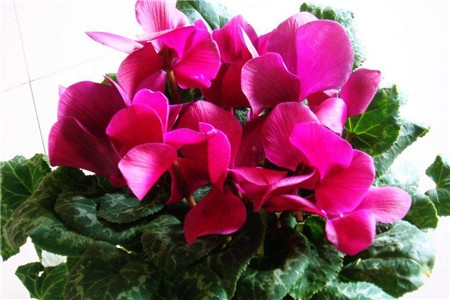
0
0
文章
巴黎铁塔
2018年05月12日

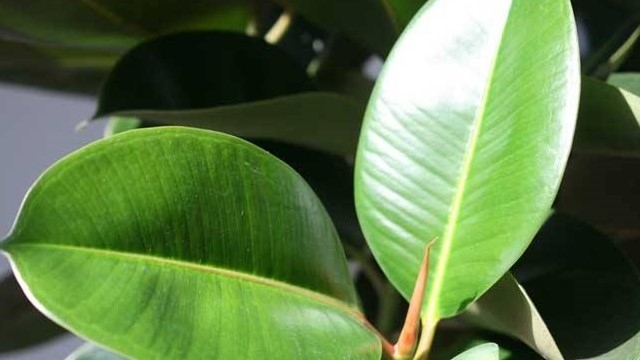
1、更换土壤
原因:若是长时间没有给橡皮树换土,土壤之中的养分被植株吸收的所剩无几,就很难继续支持植株继续正常生长。它就会因为养分供给不足而出现黄叶的现象。
解决方法:给橡皮树换土:。在室内进行换盆的操作,事先为它准备好合适的新盆和新土。首先将室温调至15℃左右,然后将植株从原来的盆中取出,之后将剪掉坏掉的根须,再将之栽入到新的盆土之中,浇透水,放到阴凉处养一段时间,就可以恢复正常养护了。
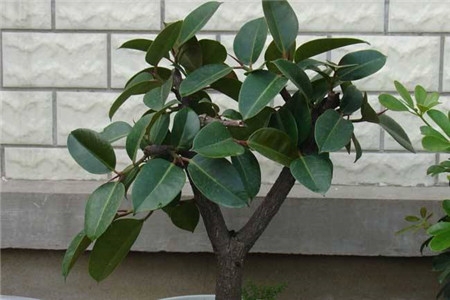
2、浇水施肥
原因:橡皮水对水分和肥料的需求量比较高,长时间不浇水施肥会导致它缺乏养分,无法正常的生长,进而出现黄叶等现象。
解决方法:及时浇水施肥。若是长时间没有给橡皮树浇水,那就为它浇一次透水,之后按照科学的方法进行浇水。若是长时间没有给它施肥,那就给它补加一些稀释过的磷钾肥。
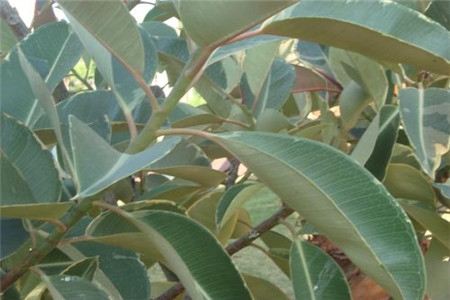
3、加强通风
原因:若是橡皮树长时间处于过于封闭的环境之中,没有足够的新鲜空气供给,它就有可能会因此产生黄叶。
解决方法:将橡皮树移动到空气流通的地方。若是室内养殖的话可以适时开窗通风,增加空气流通性。
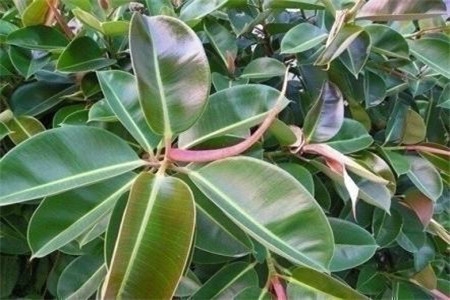
0
2
成长记
MrsMissy3477
2018年05月11日

Mixed seeds in each pod. Left is Box 1, Right is Box 2. Planted in peat moss discs today, 05.11.18.


2
0
文章
Miss Chen
2018年05月11日

Description: This annual plant is up to 1' long and sparingly branched. Its slender stems are glabrous and sprawling to erect. The alternate leaves are up to 3" long and 2" across; they are pinnately compound with 3-7 narrow leaflets. Each leaflet is linear-oblong, smooth along the margins, and hairless.Close-up of Flower Occasionally, a leaflet may be cleft into 2-3 narrow lobes. Both the stems and leaves are light green and rather mossy in appearance. Individual flowers develop from the axils of the upper leaves. Each flower is about ¼" across, consisting of 3 green sepals, 3 white petals, 6 stamens (usually), and a single style. The sepals are lanceolate-ovate and much larger than the petals. The petals are narrowly oblong and inconspicuous. The slender pedicel of each flower is about 1" long. The blooming period occurs from mid- to late spring and lasts about a month. During the heat of summer, the foliage turns yellow and quickly withers away. Each flower develops 1-3 carpels that are globoid and bumpy across the upper surface. The carpels are initially pale green or pale yellow, but they later turn brown and release the seeds. The root system consists of a slender branching taproot. This plant spreads by reseeding itself, and it often form colonies at favorable sites.
Cultivation: The preference is diffuse sunlight to light shade during the spring when vegetative growth and development occurs, otherwise it can be quite shady. The soil should be consistently moist and loamy or silty. This plant doesn't like to dry out.
Range & Habitat: The native False Mermaid occurs occasionally in northern and east central Illinois, otherwise it is rare or absent (see Distribution Map). Habitats include moist to mesic deciduous woodlands and low-lying areas along springs and small rivers in wooded areas. False Mermaid is usually found in high quality woodlands where the original flora is still intact. This is one of the spring wildflowers in woodlands that is threatened by the invasion of Alliaria petiolata (Garlic Mustard).
Faunal Associations: The small inconspicuous flowers can attract flower flies and small bees. The foliage is not known to be toxic and may be edible to mammalian herbivores, although little is known about floral-faunal relationships for this species.
Photographic Location: A moist area of Busey Woods in Urbana, Illinois.

Comments: This inconspicuous little plant is easy to overlook, except where it occurs in sizable colonies along the woodland floor. The delicate foliage is attractive and resembles moss or a Galium sp. (Bedstraw). It isn't immediately obvious when False Mermaid is blooming as the flowers are inconspicuous – careful inspection at the right time during the spring will reveal the green sepals, tiny white petals, and the stamens. It is fairly easy to identify this plant because each flower has only 3 sepals and 3 petals, while the alternate leaves are pinnately compound. Other woodland plants with a similar appearance include Galium spp. (Bedstraws) and Ellisia nyctelea (Aunt Lucy). Bedstraws have flowers with 4 petals and their simple leaves occur in whorls. Aunt Lucy has pinnately compound leaves, but its flowers have 5 white petals and its foliage is more or less hairy.
Cultivation: The preference is diffuse sunlight to light shade during the spring when vegetative growth and development occurs, otherwise it can be quite shady. The soil should be consistently moist and loamy or silty. This plant doesn't like to dry out.
Range & Habitat: The native False Mermaid occurs occasionally in northern and east central Illinois, otherwise it is rare or absent (see Distribution Map). Habitats include moist to mesic deciduous woodlands and low-lying areas along springs and small rivers in wooded areas. False Mermaid is usually found in high quality woodlands where the original flora is still intact. This is one of the spring wildflowers in woodlands that is threatened by the invasion of Alliaria petiolata (Garlic Mustard).
Faunal Associations: The small inconspicuous flowers can attract flower flies and small bees. The foliage is not known to be toxic and may be edible to mammalian herbivores, although little is known about floral-faunal relationships for this species.
Photographic Location: A moist area of Busey Woods in Urbana, Illinois.

Comments: This inconspicuous little plant is easy to overlook, except where it occurs in sizable colonies along the woodland floor. The delicate foliage is attractive and resembles moss or a Galium sp. (Bedstraw). It isn't immediately obvious when False Mermaid is blooming as the flowers are inconspicuous – careful inspection at the right time during the spring will reveal the green sepals, tiny white petals, and the stamens. It is fairly easy to identify this plant because each flower has only 3 sepals and 3 petals, while the alternate leaves are pinnately compound. Other woodland plants with a similar appearance include Galium spp. (Bedstraws) and Ellisia nyctelea (Aunt Lucy). Bedstraws have flowers with 4 petals and their simple leaves occur in whorls. Aunt Lucy has pinnately compound leaves, but its flowers have 5 white petals and its foliage is more or less hairy.
0
0





